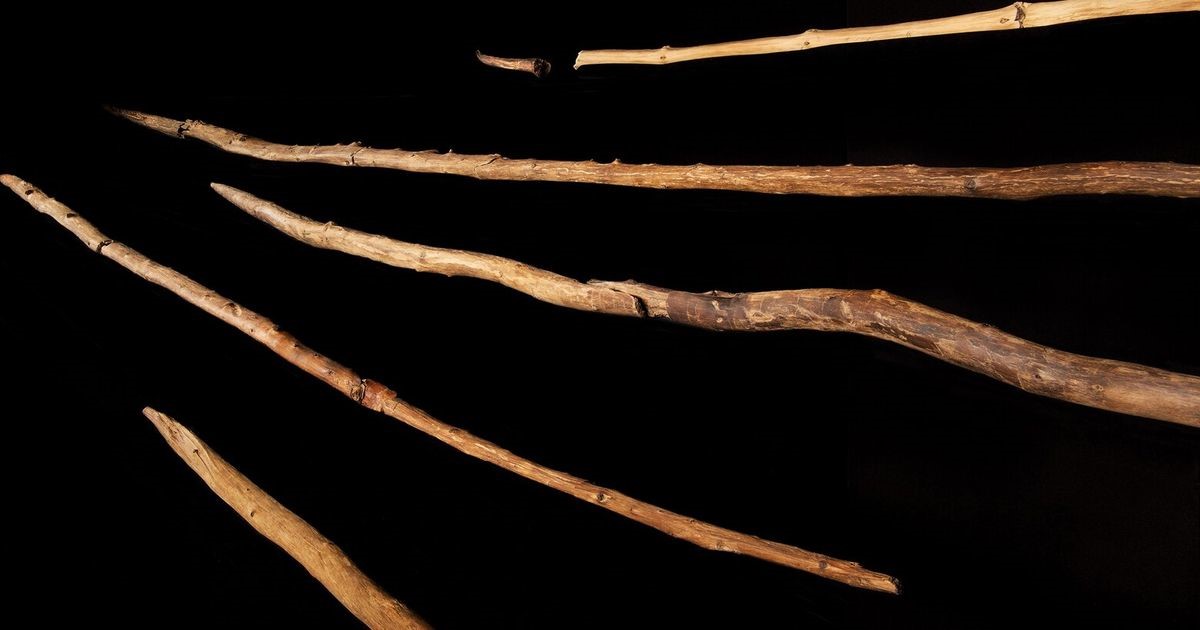Description

Disclaimer: Copyright infringement not intended.
Context
- Recent research suggests that the traditional concept of the Stone Age, primarily characterized by stone tools, should be reconsidered to include the significant use of wood, leading to the proposition of the 'Wood Age'.
- A study of wooden artifacts from Schöningen, Germany, indicates these were not merely simple tools but technologically advanced instruments requiring substantial skill and precision.
Periodising Human Prehistory
- Definition of Prehistory: Prehistory refers to the time before written records, studied mainly through archaeological findings (physical remains) and ethnographic research (study of human cultures).
- Thomsen's Chronology: In the 19th century, Danish archaeologist Christian Jürgensen Thomsen introduced a systematic classification of prehistory into the Stone Age, Bronze Age, and Iron Age based on technological progress.
- Stone Age Overview: The Stone Age began around 3.4 million years ago and is divided into three periods:
- Palaeolithic (Old Stone Age): Spanning up to around 11,650 years ago, marked by the use of rudimentary stone tools and a hunter-gatherer lifestyle.
- Mesolithic (Middle Stone Age): A transitional phase between the Palaeolithic and Neolithic periods.
- Neolithic (New Stone Age): Beginning around 12,000 years ago in West Asia, characterized by the advent of settled agriculture and domestication of animals.
Preservation Bias
- Archaeological Evidence: The classification of the Stone Age relies heavily on the discovery of stone tools, which provide insight into the lives and capabilities of early humans.
- Darwin's Observation: Charles Darwin noted in "The Descent of Man" that creating even the simplest stone tools required significant mental and physical sophistication.
- Material Use Diversity: While stone tools dominate archaeological finds, early humans also used bones, antlers, clay, and limited metalworking. However, evidence of woodworking has been scarce.
- Early Wood Use: The earliest wooden artifacts, such as dwellings, date back to about 700,000 years ago, much later than the earliest stone tools.
- Preservation Challenge: Wood deteriorates over time, leading to a preservation bias that skews our understanding of early tool use. Only a few Lower Palaeolithic sites have yielded wooden artifacts.

The Importance of Schöningen
- Unique Site Conditions: The Schöningen site in Germany offers exceptional preservation of wooden artifacts due to its damp and oxygen-deprived soil conditions, preventing decomposition.
- Diverse Wooden Tools: The site has yielded 187 wooden artifacts, showcasing a variety of advanced woodworking techniques, including splitting, scraping, and abrasion.
- Historical Impact: Discoveries from Schöningen, such as wooden spears and other tools, challenge the view that early humans were simple scavengers and highlight their advanced planning, hunting, and tool-making capabilities.
- Famous Finds: In the mid-1990s, archaeologist Hartmut Thieme discovered wooden spears along with butchered horse remains, dating back to around 400,000 years ago. This suggested that systematic hunting and advanced technology were part of early human behavior much earlier than previously thought.
Technological Insights
- Advanced Analysis Techniques: Researchers used 3-D microscopy and micro-CT scanners to study wear patterns and cut marks on wooden tools, revealing sophisticated techniques like resharpening and recycling of tools.
- Complexity of Tools: The analysis showed that early humans were capable of complex woodworking, including the splitting of wood and the maintenance of tools, previously attributed only to modern humans.
- Innovative Uses: Tools made from split wood were likely used for various domestic activities, demonstrating a broad spectrum of uses beyond hunting.
Conclusion
- The findings from Schöningen offer a more comprehensive view of prehistory, highlighting the significance of wood alongside stone in early human tool-making.
- The study underscores the advanced technological and cognitive skills of pre-modern humans, indicating that they were capable of more complex activities than traditionally believed.
- These discoveries necessitate a reevaluation of our understanding of early human behavior and technological development, emphasizing the importance of wood as a primary material in prehistory.
|
PRACTICE QUESTION
Q. Examine the implications of redefining the Stone Age as the 'Wood Age' based on recent archaeological discoveries. How does this reevaluation alter our understanding of early human technological capabilities?
|
SOURCE: THE INDIAN EXPRESS
















